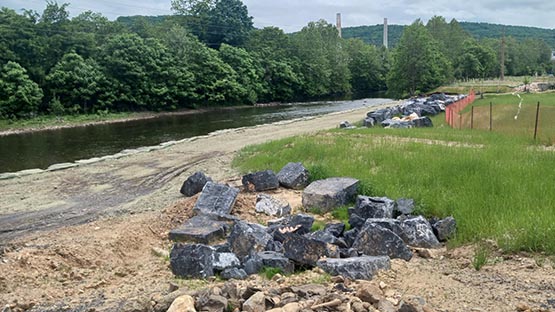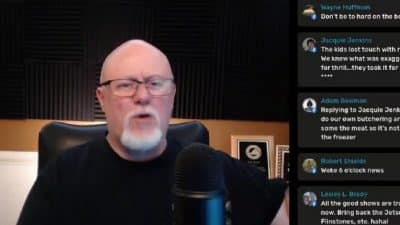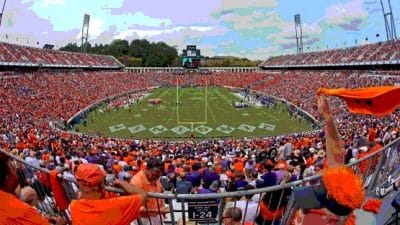
Funny thing, that. Everybody that I’ve talked to about the unfortunate landmark that is the Downtown Wall, as people have taken to calling it, is asking the same set of questions.
“The Paradisos have an interest in understanding what would happen once the city’s wall was removed. I communicated back that my original message was intentionally silent on that matter because it was my expectation that we would have exhausted by that time the money that we would have allocated to the project, and given that we would be incurring additional expense, legitimately so, nonetheless I wasn’t prepared to make a recommendation or commitment that we do anything to the exterior other than have a conversation with them about its condition,” city manager Mike Hamp told Waynesboro City Council two weeks ago when the matter of the downtown wall was brought up at a work session.
The Paradisos, I should explain, are Bruce and Constance Paradiso, the owners of the building at 329 W. Main St. that has a noteworthy scar on its side that’s been there since April. That was when work began and quickly shut down on a project to remove the freestanding wall adjacent to the Paradisos’ building that appeared to be on the verge at some point in the future of coming down on its own.
I’m getting ahead of myself here. The wall is there because of an effort in the early 1970s to build a pedestrian mall in the middle of downtown at a location that was then occupied by a historic antebellum structure that for many years had been home to a lavish hotel. The building had since been subdivided into two retail spaces, and one of them was taken down to create a pedestrian link between Main Street and Spring Lane.
In the process, the city put up a brick wall to provide visual coverage, so to speak, for the side of the half of the old hotel that was left standing.
Fast forward to the 2000s, and basic structural issues regarding the wall appeared to be on the verge of becoming safety hazards to pedestrians and to the owners of the building next door, as cracks in the wall that began to manifest seemed to foretell the beginning of the end of the wall’s lifespan.
The city decided to take action in the form of a plan to demolish the wall. The plan was coordinated with the Paradisos to the point where city workers were given access to the 329 W. Main St. building to do what they needed to do to get the wall down.
Here is where the controversy starts. “So that Sunday morning, they’ve got jackhammers, and they’re trying to jackhammer and pry this wall away from our building. And they can’t get it, and it takes them forever to get to this point. And they create a big gap in there, and they put paper on it. And then they stop because they feel the roof shake,” Constance Paradiso explained to me, and later showed me a video that she took the day that the work began and came to an abrupt halt, April 27.
Everybody agrees on the roof-shaking part. Where the story gets … complicated … is in the area of, well, what caused the roof to shake? The city has maintained that it was an issue predating the work on its wall, though City Hall has backed down from its initial read that the building itself might be unsafe or even in such bad shape as to be considered for condemnation.
This is essentially where we are right now. As Hamp explained to City Council two weeks ago, “It was the general consensus that the city should not proceed forward with the removal of the wall until the Paradiso building could be secured, ensuring the safety of the workers removing the wall and protecting ultimately the integrity of their building to the greatest extent possible.”
From the Paradisos’ point of view, those issues have been accounted for. They went out, at the suggestion of the city, and hired a structural engineer to examine their building and come up with a plan for making whatever fortifications would be necessary to allow the work on the city wall to proceed. The first engineer that they contracted ended up deciding not to file a report on his findings at the suggestion of his insurance provider, the Paradisos told me, but a second engineer, Dave Segars, has since given the building, if not the roof, a clean bill of health.
“The roof is an issue,” Segars told me, though he said the matter of devising a plan for giving city workers access to the roof to undertake the wall-removal work in a safe manner was something that could be relatively easily achieved.
Segars’ contribution to the controversy is in his assessment of the structural integrity of the wall based on his examination of the significant part of the Downtown Wall that still remains. “I could tell when I looked at the wall … I don’t want to say it wasn’t in danger of falling down, because when you say something like that, you’re really putting yourself out there, but with the cracks the way they were, it appeared to me that they just hadn’t put an expansion joint in it. And when brick walls don’t have an expansion joint, they crack. And oftentimes they’ll crack vertically and horizontally, which is what that wall has done. But that doesn’t mean that the wall is going to come down,” Segars said.
So maybe the wall needed to come down, maybe it didn’t. And then there’s the matter of, since the decision was made to take the wall down, well, what was the plan for the pedestrian mall post-wall? “After all this, after the talk about the building being demolished, about it being declared unsafe, about what we were going to have to do to make things right, we asked, What was the plan once the wall was down? We don’t know. They didn’t have a plan. They were just going to take the wall down,” an incredulous Bruce Paradiso said to me.
I don’t get a sense from talking with City Hall that there was a plan for the mall post-wall in place, which seems to back the Paradisos up on that rather important point. Remember that Hamp had told City Council that he had been “intentionally silent” on the matter to the Paradisos because it was his assumption that the budget for the project would have been exhausted by that point.
Since the work session in which this issue was most recently discussed, city officials have initiated steps to get a contractor to the location to look at the Paradisos’ building and make suggestions for potential finishes that could provide an aesthetic solution, assistant city manager Jim Shaw told me. Shaw also made it clear, though, that the city had not budgeted to replace the wall or provide any other form of visual coverage once it was gone, and that the hope had been at the outset that the city could remove the wall, and the back wall on the Paradisos’ building could serve as the visual basis of things from there.
“They said they didn’t want to put up another brick wall. I can understand that. I don’t want another brick wall attached to our building. But I know we’re not going to leave that wall the way it is now,” Constance Paradiso said. “I’m the chair of the WDDI Design Committee. I can’t allow them to leave the building like that. Even if I weren’t the owner, that’s absurd. You’re going to spend all this money on streetscape, and you’ve got something that looks like this?”
The Paradisos are clearly beyond frustrated at this point. “Every time somebody goes in there, I clean up behind them,” Bruce Paradiso said of the engineering work that has been going on behind the scenes since last spring now. “We bought this building because we wanted to be a part of what is going on downtown. We love Waynesboro. We want to be a part of its revitalization. And we’re having to deal with this?” Constance Paradiso said.
And they’re having to deal with it themselves. The chair that I was sitting in across from the Paradisos in the business office at BJ Enterprises on Charlotte Avenue has yet to be graced by any sitting City Council members. “City Council members won’t talk to us. The city is what’s gotten us to this stage. What we’ve talked about, there seems to be no accountability. Well, that wasn’t said, that kind of thing. All we want is for this situation to be resolved,” Bruce Paradiso said.
– Story by Chris Graham










